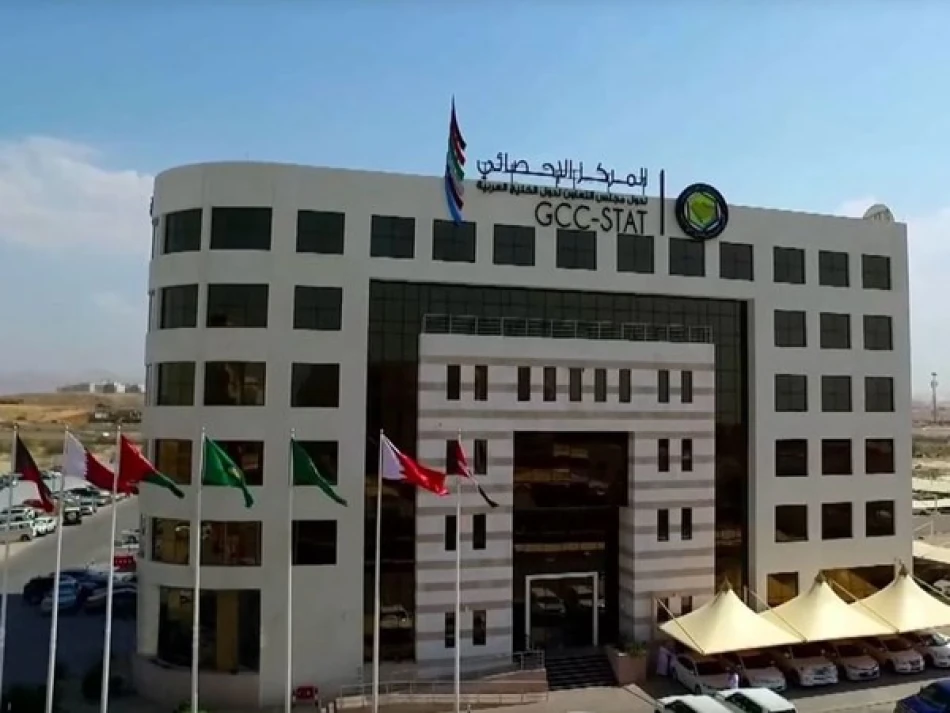
Gulf GDP Soars to $588 Billion by 2024, Showcasing Robust Economic Growth
Gulf States Achieve Economic Milestone as Non-Oil Sectors Drive 78% of GDP Growth
The Gulf Cooperation Council (GCC) economies have reached a significant diversification threshold, with non-oil activities now accounting for 77.9% of the region's $587.8 billion GDP in 2024. This shift represents more than just statistical progress—it signals the maturation of a decade-long strategy to reduce dependence on hydrocarbon revenues and build sustainable economic foundations.
The Numbers Tell a Transformation Story
The GCC's combined GDP grew 1.5% year-over-year from $579 billion in 2023, with oil activities contributing just 22.1% of total output. This marks a historic inversion from the oil-dominated economies that defined the region for decades.
Manufacturing industries led the non-oil charge at 12.5% of GDP, followed by wholesale and retail trade at 9.9%, and construction at 8.3%. Public administration and defense contributed 7.5%, while financial and insurance activities added 7%, and real estate activities accounted for 5.7% of economic output.
Strategic Vision Meets Market Reality
Diversification as Economic Insurance
This transformation didn't happen by accident. Since the 2014-2016 oil price collapse, GCC governments have aggressively pursued economic diversification through massive infrastructure investments, regulatory reforms, and strategic sector development. Saudi Arabia's Vision 2030, the UAE's economic diversification strategy, and similar initiatives across the region are now showing measurable results.
The manufacturing sector's prominence at 12.5% of GDP reflects successful industrial policy implementation, particularly in petrochemicals, aluminum, and increasingly, technology manufacturing. This positions the Gulf as a regional production hub rather than merely a resource exporter.
Financial Sector Maturation
The 7% contribution from financial and insurance activities indicates the region's growing role as a Middle Eastern financial center. Dubai's emergence as a fintech hub, Saudi Arabia's capital market reforms, and the region's increasing integration with global financial markets have created substantial value-added services beyond traditional banking.
Global Context and Competitive Positioning
Compared to other resource-rich economies, the GCC's 78% non-oil GDP share puts it ahead of many peers. Norway, often cited as a diversification success story, maintains roughly 70% non-oil economic activity, while Russia and many African oil producers remain heavily dependent on commodity exports.
The construction sector's 8.3% contribution reflects ongoing mega-project investments across the region, from Saudi Arabia's NEOM to Qatar's World Cup infrastructure legacy and the UAE's Expo 2020 follow-through. These projects create immediate economic activity while building long-term competitive advantages in tourism, logistics, and business services.
Investment Implications and Future Trajectory
For investors, this data suggests the GCC has successfully created investable non-commodity sectors with genuine growth potential. The retail and wholesale trade sector's 9.9% GDP contribution indicates robust domestic consumption and the region's growing role as a re-export hub connecting Asia, Africa, and Europe.
The relatively modest 1.5% overall growth rate, however, suggests the region faces the challenge of scaling these diversified sectors rapidly enough to offset demographic pressures and maintain living standards. With young, growing populations across most GCC states, economic diversification must accelerate to create sufficient high-value employment opportunities.
The Road Ahead
This milestone represents progress, not completion. The real test will be whether these non-oil sectors can maintain growth momentum during the next global economic downturn or oil price volatility cycle. The GCC's economic transformation has created a more resilient foundation, but the region's ultimate success will depend on continued innovation, productivity growth, and integration with global value chains beyond energy exports.
Most Viewed News

 Layla Al Mansoori
Layla Al Mansoori






